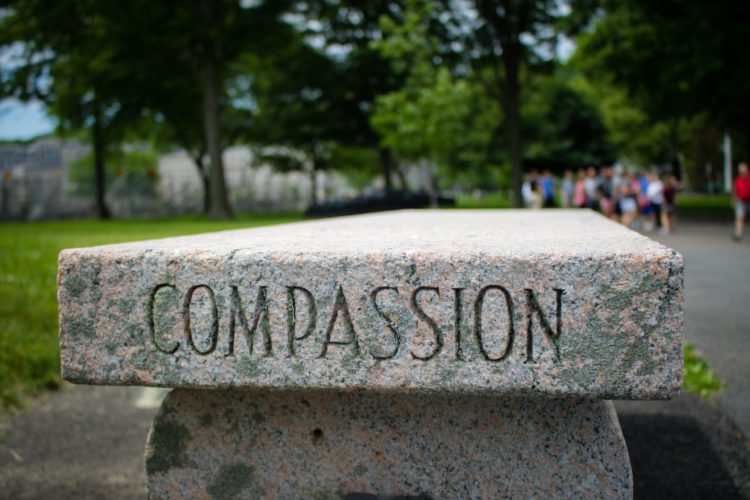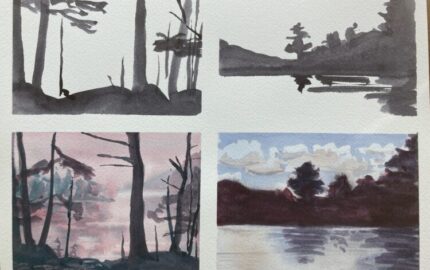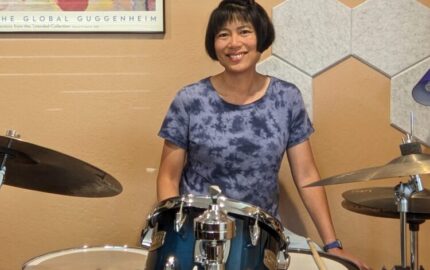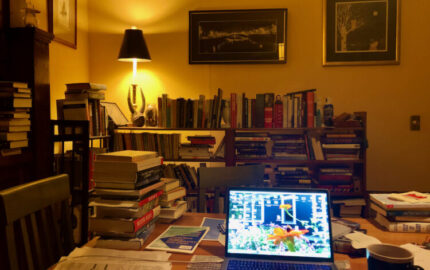Every morning I wake up and do exactly what selfcarefederation.org and everydayhealth.com and verywellmind.com and all those other “take care of yourself” sites and blogs and organizations tell me not to do. I dive into the news of the day. Lying in bed, barely emerging from what is sometimes, but not often enough, restorative sleep, I scroll through The New York Times on my phone: flooding in Kentucky, wildfires in New Mexico, war in Ukraine, starvation in Afghanistan, 6.8 million Syrian refugees, monkeypox, the fracturing of American democracy, a 20-year-old with an assault weapon opening fire in a grocery store.
When I am not lying there between the sheets feeling scared — a feeling that is more and more common — I am feeling emotionally drained. And sad. And then sadder than sad: powerless.
I suffer from what is variously called disaster fatigue, psychic numbing, and the condition that often results from this: compassion exhaustion. My wounds are both self-inflicted — no one forces me to delve into the horrors of the day the moment I open my eyes — and inescapable. Anyone who spends any part of the day on social media, which is to say everyone, is exposed. Overexposed. Bombarded.
If I feel this way as a recipient of news — and don’t you? — then I must address it as reporter of such news, as a narrative nonfiction author who writes about big, messy, troubling subjects like America’s epidemic of mass incarceration and its ugly consequence, the crisis of reentry. I am both a consumer of content that numbs and exhausts me and often, despite my best intentions, a producer of such content.
Until recently I didn’t know what I was feeling as a reader and what I was struggling with as a reporter had a name, or several names. But researchers have been studying disaster fatigue — the emotional exhaustion that comes from experiencing catastrophes, especially repeated adversity, for many years. Their focus has been on those who live through natural disasters. There have always been disasters, natural and human-caused. But experiencing disturbing events by proxy occurring thousands of miles away in real time is a new phenomenon. On any given day, it can feel as if the world is falling apart. We, all of us, live vicariously through these disasters, and that unceasing onslaught of bad news may have a similar cumulative effect on us as it does on those experiencing the events IRL: fatigue. Or so it seems to my disaster-filled and -fueled brain.
Does my own reporting contribute to that onslaught?
The American psychiatrist Robert Lifton coined the term “psychic numbing” in the late 1960s to help explain the psychological phenomenon that causes us to feel indifferent to the suffering of large numbers of people. We can care about one; we cannot hold compassion for the many. As one of the least compassionate people in history, Joseph Stalin, is quoted as saying: “One death is a tragedy; a million deaths is a statistic.”
Do I numb my readers when I report about the 2 million behind bars? About the 600,000 who are released every year? I mean to show both the enormousness and enormity of the problem. Am I instead sabotaging my efforts with these big numbers?
The concept of “compassion fatigue” — the cost of caring-caring-caring that leads to burnout and traumatization — was introduced to the psychoanalytic community back in the 1980s by Charles Figley, a university professor and researcher specializing in stress and trauma. Do my last two books, my weekly blogging, my every-other-day tweeting, contribute to the burnout of the very people I want to engage in this issue? Does all this work cause people to check out rather than plug in to the spirited discussion and civic engagement I hope for?
It is chilling to consider that, given the research, especially that being done by Dr. Paul Slovic, this might be true, that the audiences that I, and we, want so much to reach we instead overwhelm and anesthetize.
I have two approaches in my own work that have helped me confront this problem with the hope that it is possible to write stories that both explore difficult issues and resonate in a way that mitigates the fatigue-exhaustion-numbing response.
But first, time out for a recent ah-ha moment prompted by Storyboard editor Jacqui Banaszynski. If you follow her on Facebook, you know that she has been posting Ukrainian art: a Madonna-like woman holding a sad-eyed brown rabbit, a wind-swept woman with a red lion in tow, a joyful girl on a swing, an intimate moment between friends, a soft purple pre-dawn landscape, brilliant sunflowers. These are lovely works of art. Amid the memes and snarks and humble-brags that populate my feed, they are an oasis of beauty.
But that’s not what prompted the ah-ha moment; this is: Looking at that free-spirited girl swinging against a pale blue sky, I found myself crying. And I realized it was the first time I had wept for the people of Ukraine. I had, like all of us, read the stories, seen the war pictures, listened to Volodymyr Zelenskyy address Congress, read more stories, seen mores pictures of bombed-out towns, of Ukrainian citizens dead in the streets. And it paralyzed me, just as the research I didn’t yet know existed predicted it would.
But the art went to a different place in my brain. Literally. Those images allowed me to feel again when I hadn’t realized I had stopped feeling.
The lesson I take from this is the role other media — art, music, theater, dance — can have in our connection to and emotional involvement in the world. Maybe this is not an ah-ha moment for many people, but for someone whose life has been in journalism, who has trusted journalism in all its multi-media forms to enlighten me, it did come as a revelation. Why had I thought “multi-media” meant only producing journalism with words, sound and image? What about these other media? There was a force at work here, an energy that could break through the lethargy, enliven the exhausted, reignite compassion. How could I, and how can we, we embrace this? I have much to think about.
Meanwhile, I have embraced the practices, when possible, of “solutions journalism,” a term I heard first from long-time Seattle Times executive editor Mike Fancher. This approach to reporting argues that the press should do more than expose problems. It should also, with deep reporting, accuracy and a shunning of “happy news,” examine and tell stories about responses to those problems. The Danes, 15 years ago, called this “constructive journalism” — reporting that is solution-focused instead of revolving around and defaulting to conflict- and disaster-oriented stories; there now is an institute to study, support and teach it. Six years later, two New York Times journalists founded the non-profit Solutions Journalism Network. Fancher was busy spreading the word wherever he went — and he went everywhere. I was fortunate enough to briefly be in his orbit when I taught for and he presided over what is now known as the Agora Journalism Center in Portland, Oregon.
It was challenging to apply this approach to my recent work on incarceration. There is so much that is conflict-based, so many deep-rooted problems, so much injustice in the justice system. I cannot ignore this.
But I know, or rather the research had told me, that beating that drum would only serve to deafen the people who need to listen. And so, in “A Grip of Time,” which was based on my three years running a writers’ group in a maximum security prison, I let the focus be the non-toxic camaraderie, the humor-in-dark-places, the extraordinary resilience of those who had spent decades behind bars. They were, in how they lived, in how they treated each other, in the personal transformation they struggled to make, a different window into the world of mass incarceration. They weren’t the “solution,” of course, but neither was I telling yet another I disaster story.
“Free,” my next book, chronicled the journeys of six people as they emerged from long-term incarceration. The reentry path, the road from caged to free, is full of barriers and pitfalls. The stories I told did not ignore or diminish those obstacles. Instead, I focused on how six men and women navigated that path. Their post-incarceration lives were exercises in problem-solving and solution-finding. When I considered that some of my readers could be those behind bars reading about their potential future, I wanted them to feel a sense of possibility.
Slovic’s research on psychic numbing points to a “false sense of inefficacy,” the feeling that whatever you do, it won’t matter. But what people do does matter. This is the heart of solutions journalism.
The other approach I use to combat the it-doesn’t-matter-what-I-do aspect of psychic numbing and disaster overload is what my long-ago University of Oregon colleague Jim Lemert termed “mobilizing information.”
This is information in a story, either directly stated or linked to, that empowers the reader to act. It is not advocacy: It is self-efficacy. It is the power, should one choose to use it, to do something. It provides readers with a way to deepen their understanding, to reach out to people and organizations involved in whatever issue is being reported on, to track progress (or lack thereof), to feel involved rather than detached. And it is the simplest thing to do: a mention, a link.
As I struggle to tell tough stories in ways that don’t overwhelm, enervate or paralyze, I struggle with my own sense of paralysis as I read the news of the day. It occurs to me that the way I choose to tell these stories is as much an act of self-preservation as it is an act of journalism.
***
Lauren Kessler’s two most recent books, “Grip of Time: When Prison is Your Life” and “Free: Two Years, Six Lives, and the Long Journey Home,” are deep dives into the worlds of incarceration and reentry. She continues to correspond with and edit the work of the men in the prison writing group she founded in 2016, and is mentoring two of the previously incarcerated men.
When I am not lying there between the sheets feeling scared — a feeling that is more and more common — I am feeling emotionally drained. And sad. And then sadder than sad: powerless.
I suffer from what is variously called disaster fatigue, psychic numbing, and the condition that often results from this: compassion exhaustion. My wounds are both self-inflicted — no one forces me to delve into the horrors of the day the moment I open my eyes — and inescapable. Anyone who spends any part of the day on social media, which is to say everyone, is exposed. Overexposed. Bombarded.
If I feel this way as a recipient of news — and don’t you? — then I must address it as reporter of such news, as a narrative nonfiction author who writes about big, messy, troubling subjects like America’s epidemic of mass incarceration and its ugly consequence, the crisis of reentry. I am both a consumer of content that numbs and exhausts me and often, despite my best intentions, a producer of such content.
The tug between reader and writer
Until recently I didn’t know what I was feeling as a reader and what I was struggling with as a reporter had a name, or several names. But researchers have been studying disaster fatigue — the emotional exhaustion that comes from experiencing catastrophes, especially repeated adversity, for many years. Their focus has been on those who live through natural disasters. There have always been disasters, natural and human-caused. But experiencing disturbing events by proxy occurring thousands of miles away in real time is a new phenomenon. On any given day, it can feel as if the world is falling apart. We, all of us, live vicariously through these disasters, and that unceasing onslaught of bad news may have a similar cumulative effect on us as it does on those experiencing the events IRL: fatigue. Or so it seems to my disaster-filled and -fueled brain.
Does my own reporting contribute to that onslaught?
The American psychiatrist Robert Lifton coined the term “psychic numbing” in the late 1960s to help explain the psychological phenomenon that causes us to feel indifferent to the suffering of large numbers of people. We can care about one; we cannot hold compassion for the many. As one of the least compassionate people in history, Joseph Stalin, is quoted as saying: “One death is a tragedy; a million deaths is a statistic.”
Do I numb my readers when I report about the 2 million behind bars? About the 600,000 who are released every year? I mean to show both the enormousness and enormity of the problem. Am I instead sabotaging my efforts with these big numbers?
The concept of “compassion fatigue” — the cost of caring-caring-caring that leads to burnout and traumatization — was introduced to the psychoanalytic community back in the 1980s by Charles Figley, a university professor and researcher specializing in stress and trauma. Do my last two books, my weekly blogging, my every-other-day tweeting, contribute to the burnout of the very people I want to engage in this issue? Does all this work cause people to check out rather than plug in to the spirited discussion and civic engagement I hope for?
It is chilling to consider that, given the research, especially that being done by Dr. Paul Slovic, this might be true, that the audiences that I, and we, want so much to reach we instead overwhelm and anesthetize.
Breaking through the detachment
I have two approaches in my own work that have helped me confront this problem with the hope that it is possible to write stories that both explore difficult issues and resonate in a way that mitigates the fatigue-exhaustion-numbing response.
But first, time out for a recent ah-ha moment prompted by Storyboard editor Jacqui Banaszynski. If you follow her on Facebook, you know that she has been posting Ukrainian art: a Madonna-like woman holding a sad-eyed brown rabbit, a wind-swept woman with a red lion in tow, a joyful girl on a swing, an intimate moment between friends, a soft purple pre-dawn landscape, brilliant sunflowers. These are lovely works of art. Amid the memes and snarks and humble-brags that populate my feed, they are an oasis of beauty.
But that’s not what prompted the ah-ha moment; this is: Looking at that free-spirited girl swinging against a pale blue sky, I found myself crying. And I realized it was the first time I had wept for the people of Ukraine. I had, like all of us, read the stories, seen the war pictures, listened to Volodymyr Zelenskyy address Congress, read more stories, seen mores pictures of bombed-out towns, of Ukrainian citizens dead in the streets. And it paralyzed me, just as the research I didn’t yet know existed predicted it would.
But the art went to a different place in my brain. Literally. Those images allowed me to feel again when I hadn’t realized I had stopped feeling.
The lesson I take from this is the role other media — art, music, theater, dance — can have in our connection to and emotional involvement in the world. Maybe this is not an ah-ha moment for many people, but for someone whose life has been in journalism, who has trusted journalism in all its multi-media forms to enlighten me, it did come as a revelation. Why had I thought “multi-media” meant only producing journalism with words, sound and image? What about these other media? There was a force at work here, an energy that could break through the lethargy, enliven the exhausted, reignite compassion. How could I, and how can we, we embrace this? I have much to think about.
Constructive solutions in your work
Meanwhile, I have embraced the practices, when possible, of “solutions journalism,” a term I heard first from long-time Seattle Times executive editor Mike Fancher. This approach to reporting argues that the press should do more than expose problems. It should also, with deep reporting, accuracy and a shunning of “happy news,” examine and tell stories about responses to those problems. The Danes, 15 years ago, called this “constructive journalism” — reporting that is solution-focused instead of revolving around and defaulting to conflict- and disaster-oriented stories; there now is an institute to study, support and teach it. Six years later, two New York Times journalists founded the non-profit Solutions Journalism Network. Fancher was busy spreading the word wherever he went — and he went everywhere. I was fortunate enough to briefly be in his orbit when I taught for and he presided over what is now known as the Agora Journalism Center in Portland, Oregon.
It was challenging to apply this approach to my recent work on incarceration. There is so much that is conflict-based, so many deep-rooted problems, so much injustice in the justice system. I cannot ignore this.
But I know, or rather the research had told me, that beating that drum would only serve to deafen the people who need to listen. And so, in “A Grip of Time,” which was based on my three years running a writers’ group in a maximum security prison, I let the focus be the non-toxic camaraderie, the humor-in-dark-places, the extraordinary resilience of those who had spent decades behind bars. They were, in how they lived, in how they treated each other, in the personal transformation they struggled to make, a different window into the world of mass incarceration. They weren’t the “solution,” of course, but neither was I telling yet another I disaster story.
“Free,” my next book, chronicled the journeys of six people as they emerged from long-term incarceration. The reentry path, the road from caged to free, is full of barriers and pitfalls. The stories I told did not ignore or diminish those obstacles. Instead, I focused on how six men and women navigated that path. Their post-incarceration lives were exercises in problem-solving and solution-finding. When I considered that some of my readers could be those behind bars reading about their potential future, I wanted them to feel a sense of possibility.
Slovic’s research on psychic numbing points to a “false sense of inefficacy,” the feeling that whatever you do, it won’t matter. But what people do does matter. This is the heart of solutions journalism.
Empowering readers with useful information
The other approach I use to combat the it-doesn’t-matter-what-I-do aspect of psychic numbing and disaster overload is what my long-ago University of Oregon colleague Jim Lemert termed “mobilizing information.”
This is information in a story, either directly stated or linked to, that empowers the reader to act. It is not advocacy: It is self-efficacy. It is the power, should one choose to use it, to do something. It provides readers with a way to deepen their understanding, to reach out to people and organizations involved in whatever issue is being reported on, to track progress (or lack thereof), to feel involved rather than detached. And it is the simplest thing to do: a mention, a link.
As I struggle to tell tough stories in ways that don’t overwhelm, enervate or paralyze, I struggle with my own sense of paralysis as I read the news of the day. It occurs to me that the way I choose to tell these stories is as much an act of self-preservation as it is an act of journalism.
***
Lauren Kessler’s two most recent books, “Grip of Time: When Prison is Your Life” and “Free: Two Years, Six Lives, and the Long Journey Home,” are deep dives into the worlds of incarceration and reentry. She continues to correspond with and edit the work of the men in the prison writing group she founded in 2016, and is mentoring two of the previously incarcerated men.



